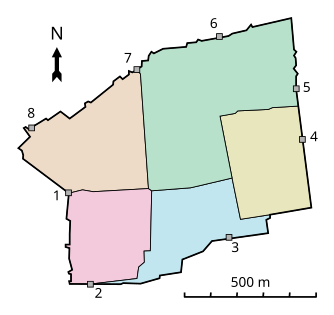
2. Zion
3. Dung
4. Golden (walled up)
5. Lions
6. Herod
7. Damascus
8. New Gate
Quarters:
This article lists the gates of the Old City of Jerusalem . The gates are visible on most old maps of Jerusalem over the last 1,500 years.
Contents
During different periods, the city walls followed different outlines and had a varying number of gates. During the era of the crusader Kingdom of Jerusalem (1099–1291), Jerusalem had four gates, one on each side. [1]
The current walls of the Old City of Jerusalem were built between 1533 and 1540 on orders of Ottoman Sultan Suleiman the Magnificent, who provided them with seven gates: six new gates were built, and the older and previously sealed Golden Gate was reopened (only to be re-sealed again after a few years). The seven gates at the time of Suleiman were, clockwise and by their current name: the Damascus Gate; Herod's Gate; Lions' Gate; Golden Gate; Dung Gate; Zion Gate; and Jaffa Gate. [2]
With the re-sealing of the Golden Gate by Suleiman, the number of operational gates was only brought back to seven in 1887, with the addition of the New Gate. [3]
Until 1887,[ citation needed ] each gate was closed before sunset and opened at sunrise. [4]











